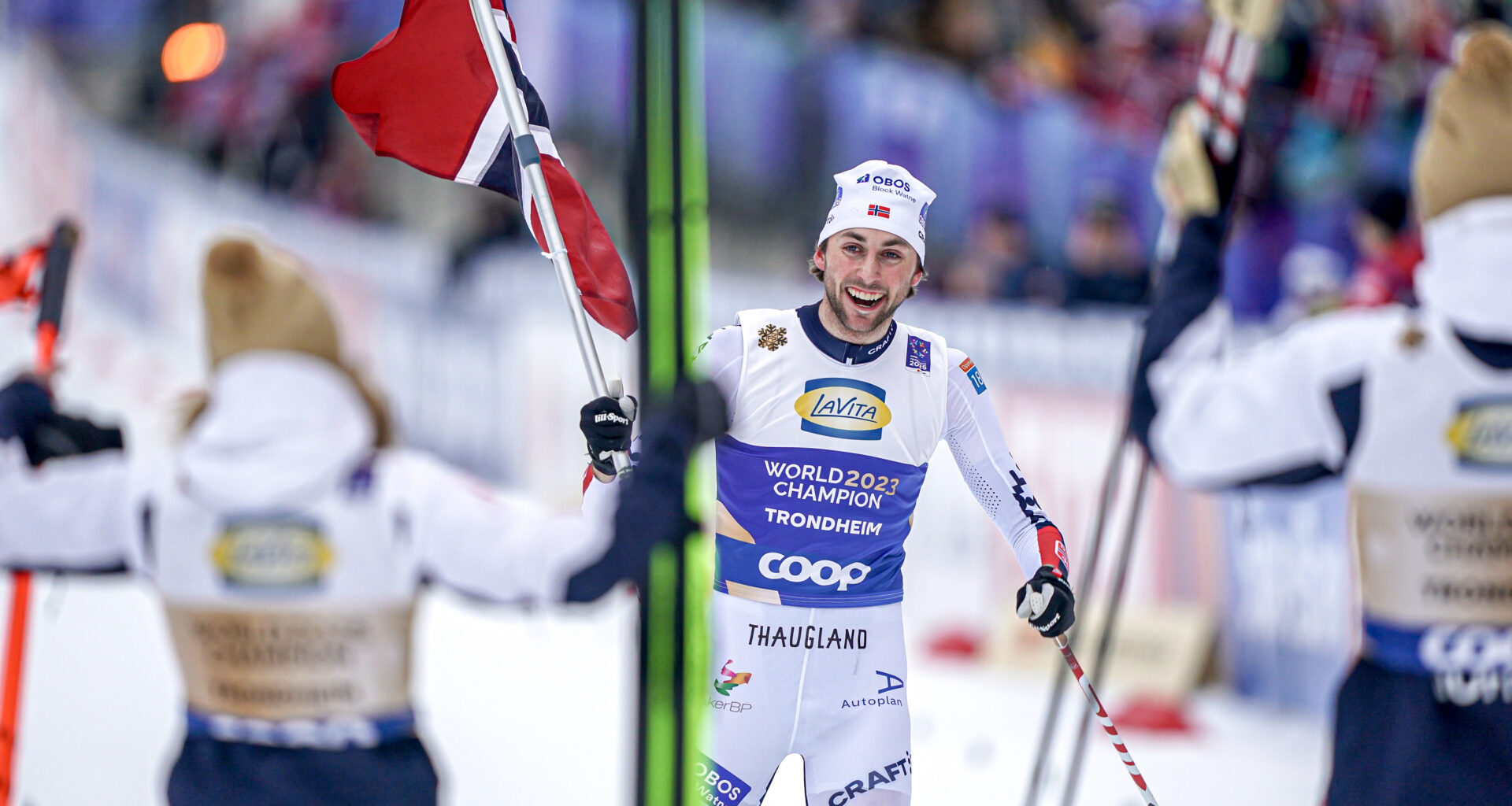Oftebro (above) maintained his strong pace to hand a 43-second advantage to Westvold Hansen over Nowak on the second leg despite Schmid’s efforts, with Japan still around eight seconds ahead of Austria as Watabe handed over to Yuna Kasai.
Kasai fell forwards in softer snow to lose some vital seconds as Purker briefly closed the gap in the battle for bronze, only to then fall herself just before her exchange to Hirner, leaving Austria 17 seconds behind Japan after two of the four legs.
Westvold Hansen increased Norway’s lead to over a minute before handing over to Hagen, with Yuna Kasai closing to within 16 seconds of Germany’s Novak.
Her sister Haruka Kasai ate further into that lead on the third leg as the battle for silver intensified, Armbruster holding off the Japanese’s charge to give Geiger a five-second cushion over Yamamoto, who in turn started with a 27-second lead over Lamparter in the race for bronze.
The Austrian cut that gap to 10 seconds after the first 2.5km and had closed it by 3.7m, but Yamamoto refused to give up and doggedly stuck behind Lamparter for the closing kilometer before his brave final assault on a medal ultimately fell short.
Lasse Ottesen, the FIS race director, explained that Lamparter’s move was “on the limit” of what was allowed but ultimately not sufficient to change the original result.
“It was a very difficult decision,” he explained. “The jury needed a lot of time and had to go through all the rules and small-print. It took too much time but in the end, I think the decision is correct.
“It was found that Lamparter moved too much, but in this case not enough to be obstructing Japan, and Japan [Yamamoto] was also involved in the obstruction himself, more than he could have been. Therefore the jury decided to let the result stand.”
Click here for full results from the Mixed Team event.
